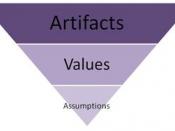Proactive management and leaders think change by recognizing that "change" challenges people to adapt and grow, or be swept away aside as complacent and obsolete. To compete in the world today, we must strive to be different. We must expand our knowledge base, sharpen our skills, and finally, manage our time more efficiently. Change is not something to fear or resist, it is the essence of life itself. By embracing and promoting positive change, we learn more about who we are and what we can do both at home and within our organizations. With change, we are given the chance and power to turn today's pain into tomorrow's gains.
This Scholarly Paper will highlight the significance of change within an organization. More specifically, it will attempt to disclose why change is complicated, and often an extremely painful process. Secondly, it will dive into the three stages of change: (1) Unfreezing the behavior (2) Changing the behavior (3) Refreezing the behavior.
We will first discuss briefly how change can be complicated in today's organizations.
Many pundits and experts rely on experience and skills to complete their respective jobs in society. In fact, many of the so-called "old heads" are as stubborn as they come and resist change at every interval. The old adage of "we have been doing it this way for years, who are you to tell us to change." This is probably one the most difficult aspects about change, that is changing people's perceptions. People become ingrained with beliefs, values, and when change is addressed, they become uncertain as described by John Schemerhorn, author of Managing Organizational Behavior.
However, it is up to management to instill the need for change by recognizing that the current "standard operating procedures" are no longer effective for survivability, and in all cases profitability.



Well Covered.
Did a good job of covering all the aspects of change, and how it affects people. However, due to the length of the essay, it needs to be made more exciting almost, to keep a reader's attention.
18 out of 18 people found this comment useful.